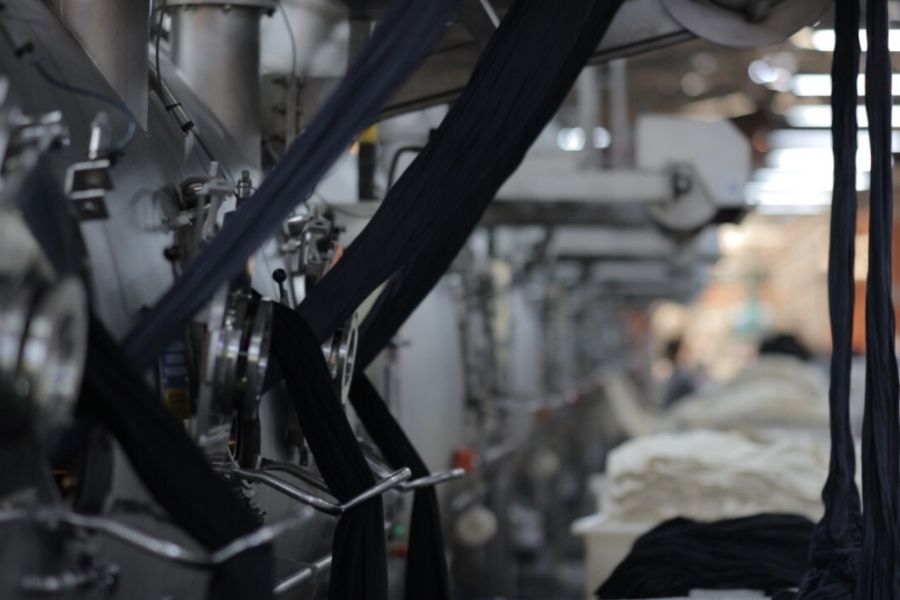10 maintenance tips for dyeing machines
The situation we are going through because of the COVID-19 has caused many of the textile plants to stop production. With a view to resuming it, a unique opportunity has …

The situation we are going through because of the COVID-19 has caused many of the textile plants to stop production. With a view to resuming it, a unique opportunity has arisen to thoroughly overhaul the dyeing machines and get them ready for maximum performance.
In addition to general advice on drawing up a good maintenance plan, it is important to apply specific checks for each type of machine. These will ensure an effective production start-up, avoiding unforeseen events that could lead to the machine being taken off the production line.
Today, we bring you some specific advices of preventive maintenance to tune up the industrial dyeing machines after a period of inactivity.
10 key points to check when tuning up the dyeing machines
1. Check that the lubricator has a correct oil level
Maintaining a correct oil level in the valve lubricator will increase the life of the components. It is important that it is in the right measure so as not to damage the solenoid valves.
2. Check that the air is purged
When production plants stop, it is common for the air in the pipes to heat up and condense, generating serious problems in the entire compressed air structure.
Together with water, this can cause corrosion, pressure drops and reduced machine performance. It is therefore very important to ensure that the air is purged before resuming activities.
3. Check the valves for leaks
20% of the electrical energy used by industries is used to generate compressed air. Approximately a quarter of this percentage is lost due to leaks in the pneumatic part of the machine. These are usually located in the manifold block and it is important to take advantage of the fact that production is stopped to identify any noises that may correspond to leaks and act accordingly.
4. Check each of the valves on the machine
Another important check point is the machine valves and pneumatic hoses. By paying attention to each of the valves, you can detect any leaks or previous problems that the machine already had.
In case you need a kit or ITALVALVOLE valve, please contact us. As authorized distributors, we will take care of the order for its replacement.
5. Check that the panel extractor works properly and that the filters are clean.
The extractor located in the panel has the function of maintaining the proper temperature of the various electrical, electronic and computer components, increasing their durability and reducing problems.
All the extractors must work to ensure proper ventilation. The filters must be well placed and clean, because if they are not in position, they will allow dirt to enter with the danger of a short circuit and if they are dirty, they will block the air inlet for cooling.
If the panel has a thermostat, check that the temperature is between 350º C and 380º C.
6. Check all the wires in the electrical cabinet to make sure they are all in good condition.
The wires in the cabinet must be shown to be well connected.
If you detect any anomaly in one of the cables, they must be connected correctly to avoid overheating and consequent electrical problems.
7. Check that the electrical cabinet is properly closed
The cabinet must be closed to prevent the entry of dirt, steam and chemicals, ensuring the integrity of the components and the safety of the installation.
8. Clean and verify that the controllers start correctly
It is important to inspect that the controller starts correctly. For this purpose, we recommend that be cleaned and disinfected specifically.
In case you have the InfoTint and TexMonitor modules, please check that the communication between the devices and our software is correct. In case of detecting any anomaly, please contact us as soon as possible so that we can check it.
9. Perform a filling and emptying process
It is advisable to create a test process cycle, composed, for example, of steps such as_
- Filling
- Product Notice
- Heating to 50º C – 60º C.
- Temperature maintained for 20 minutes.
- Discharge from dyeing machine.
During the whole process, check the performance of valves, detection of sensors, levels, liter count, etc. Trying to identify possible previous problems and solve them before the day of the production return. Repeat this process with each machine to check that it is working properly.
10. Map the temperature and create a record.
Once the process is complete, if you have a heat gun, it is a good idea to create a temperature map of the cabinet and record it in a log.
The advantage is that you will be able to see if there are bad connections generating heat inside the board, components with overheating problems and, by recording, you will be able to compare it in a few months and know if a certain component is deteriorating.
Ask for advice to optimize the performance of dyeing machines
If you do not have the tools or technical staff to carry out these inspections, you can count on us. Please note that this is part of the ITP (Programmed Technical Inspection) that we offer at EAS. If you would like more information, please do not hesitate to contact us.
At EAS we are experts in process automation solutions for the textile industry. If you detect a problem, that you would like us to review or need help with the implementation, do not hesitate to put yourself in the hands of our professional team.
We will be happy to help you throughout this process by performing a thorough review of the textile machine, to detect and correct any possible anomalies.
In addition to our solutions for the automation of textile machinery, we offer specific technical advice for predictive and preventive maintenance. We include periodic programmed revisions that will help you to optimize your textile plant.
Contact us for more information and advice.





